
The box with a standard sized mortise cylinder beside it, so you can see the size of the lock.

Pretty small.
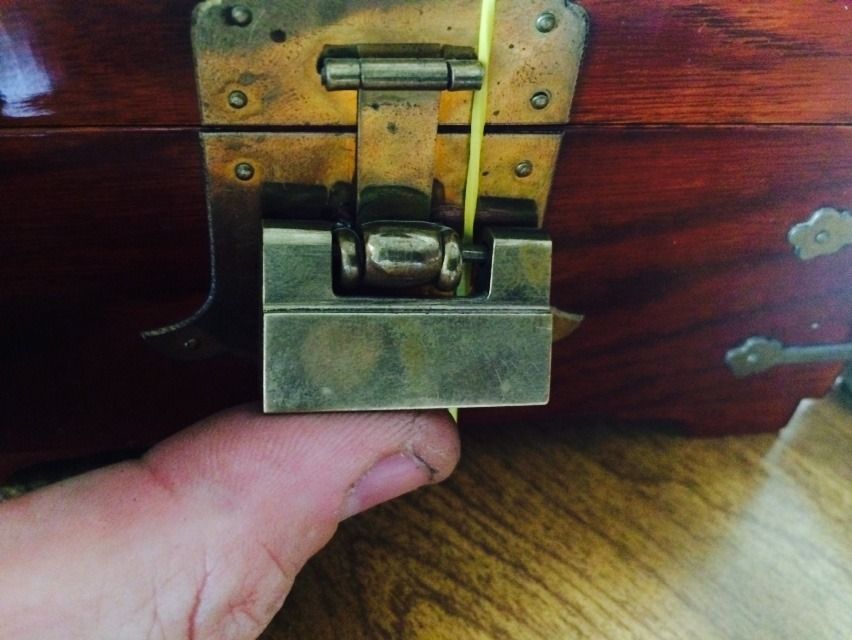
The keyway
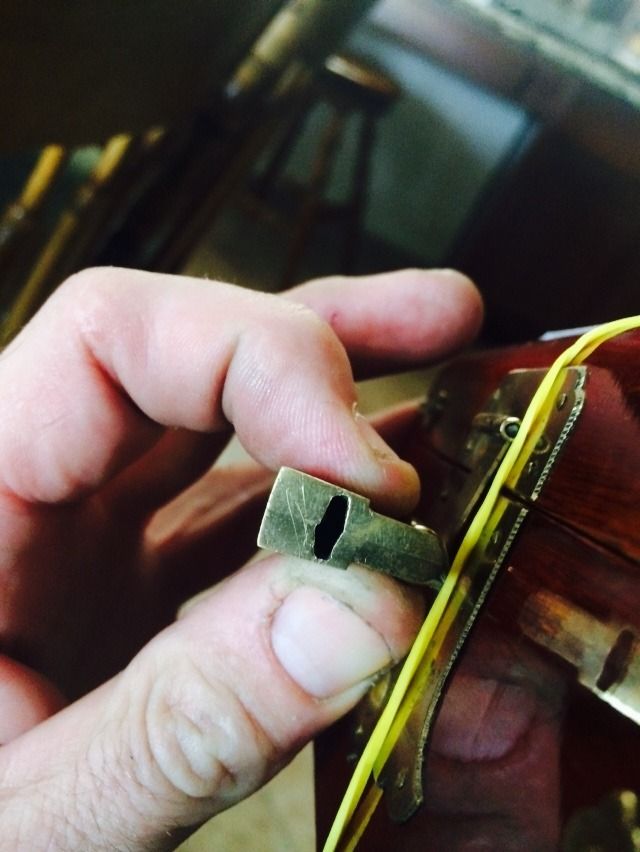
The opposite end of the lock (a dead givaway for the lock type, if you are not already familiar with the mechanism).
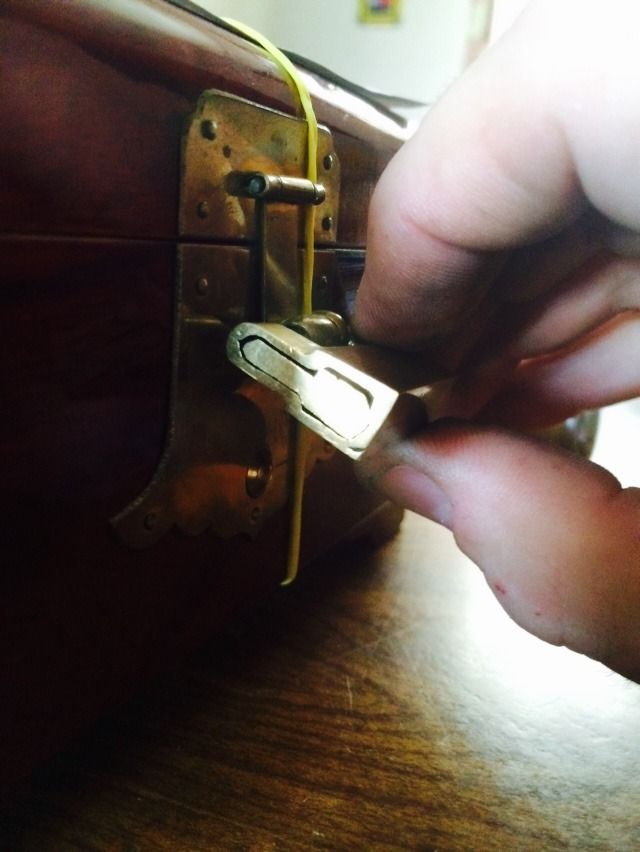
The key made from a flat steel key blank.
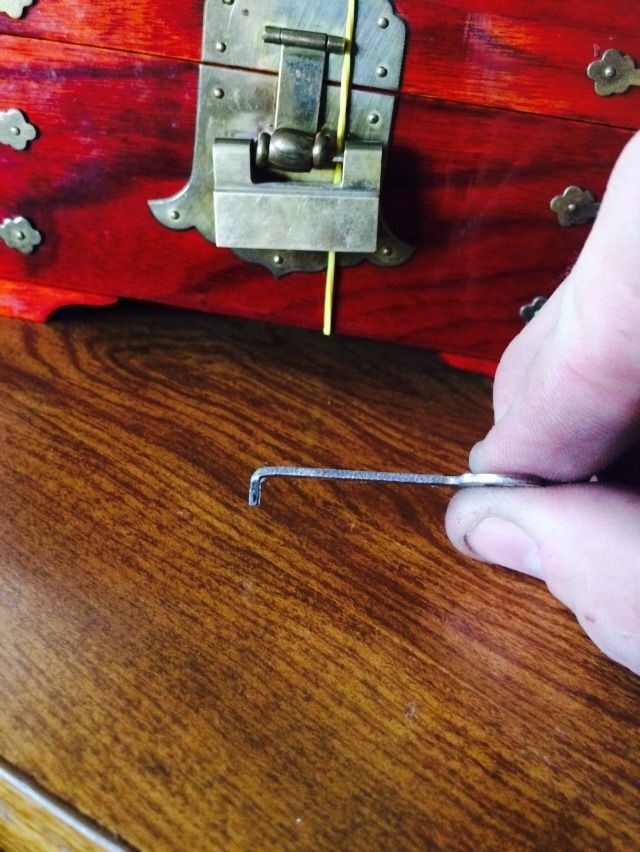
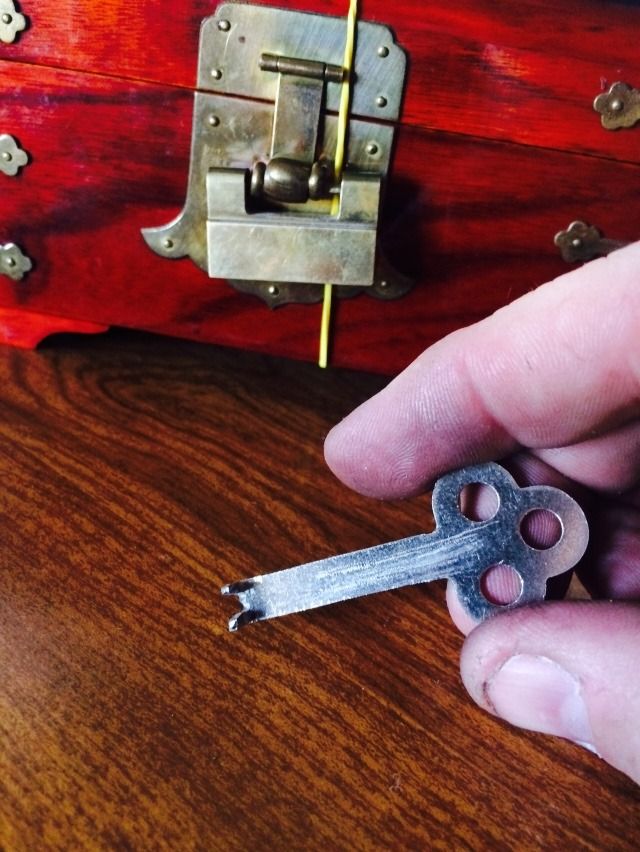
If you are not familiar with this type of lock, you have to hook the end of the key into the keyhole...
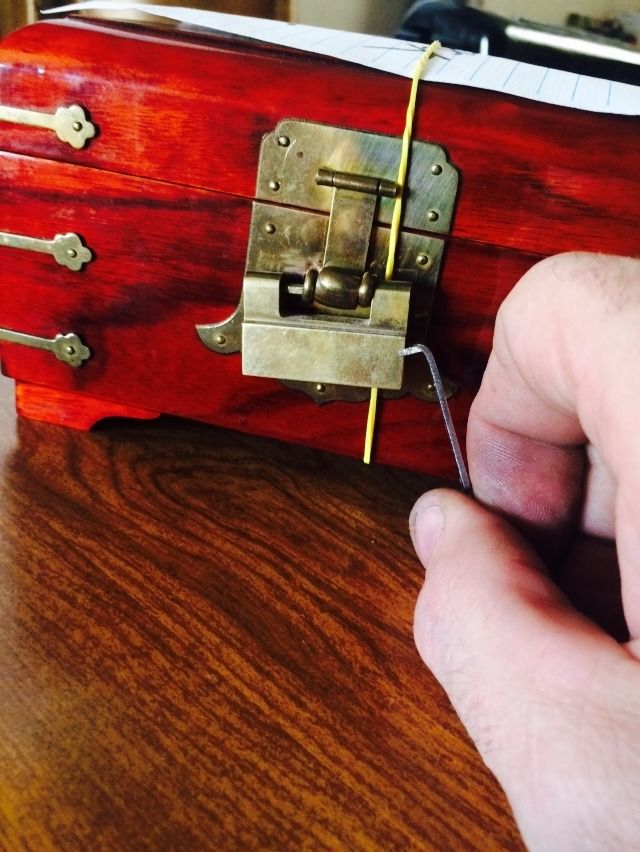
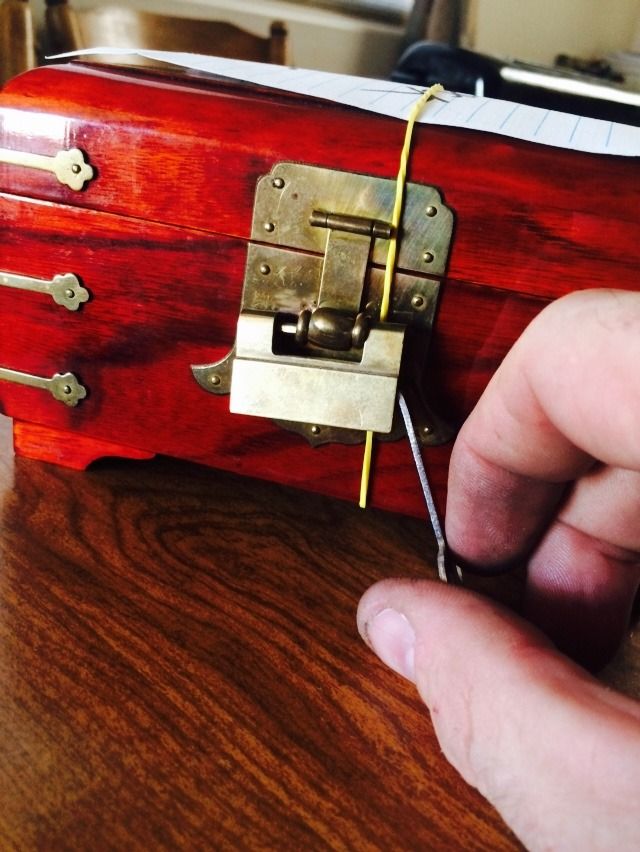
before bringing the key up level
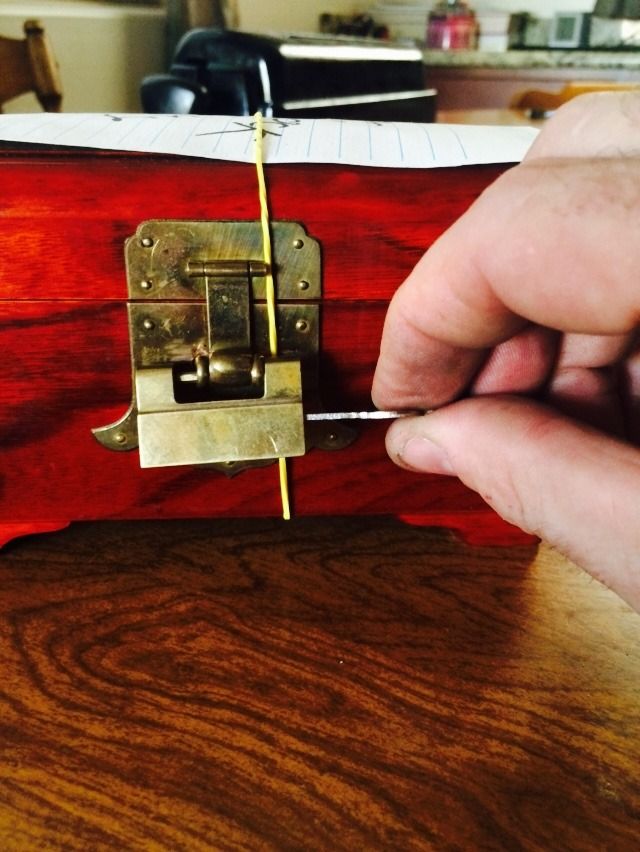
Then push the key in. If you look closely at the end of the lock opposite the key, you can see the end is coming out of the lock.
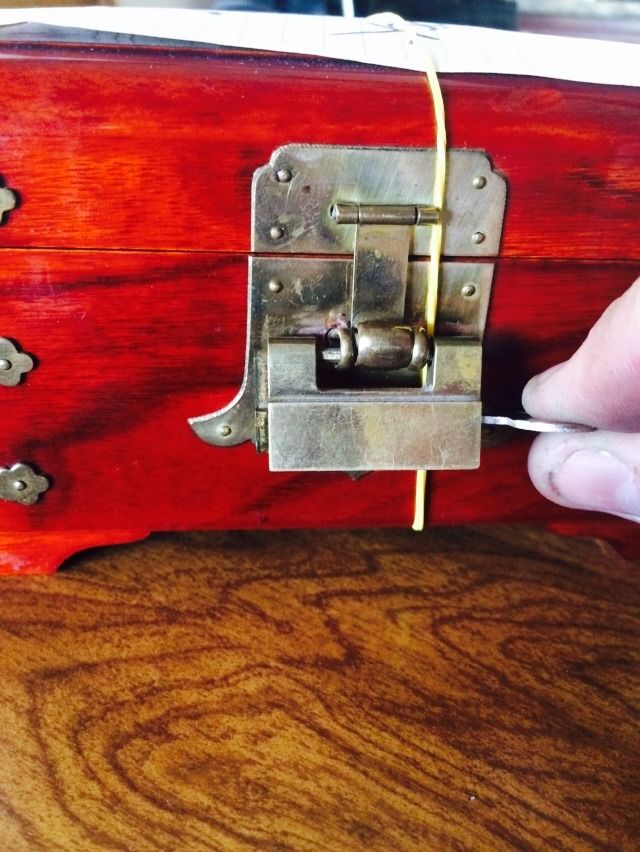
and out she comes. That end piece is also attached to the shackle.
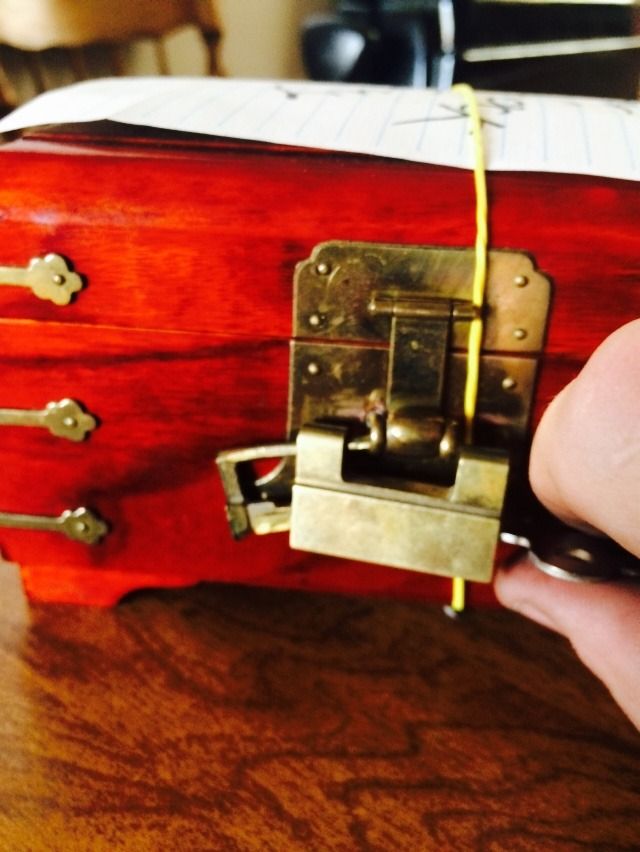
From the front
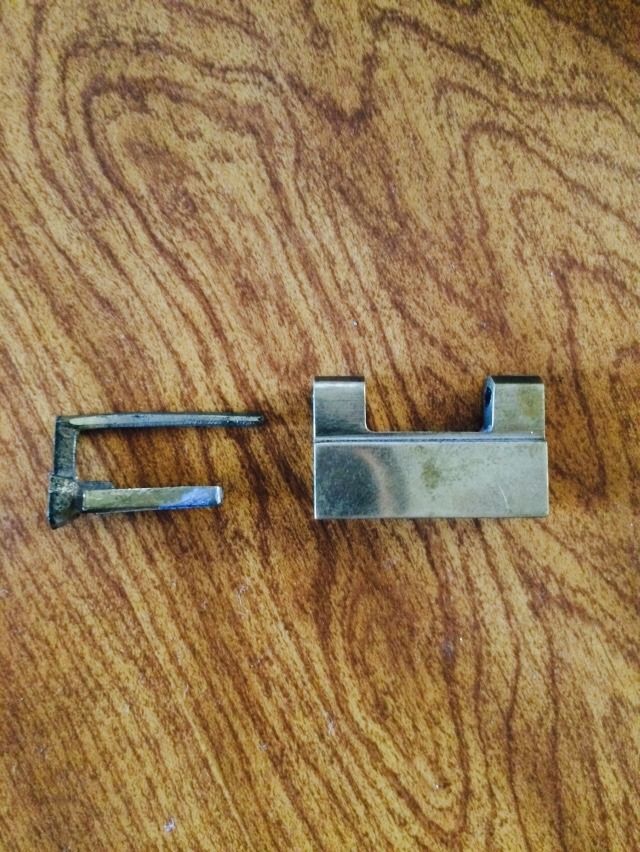
from the top view
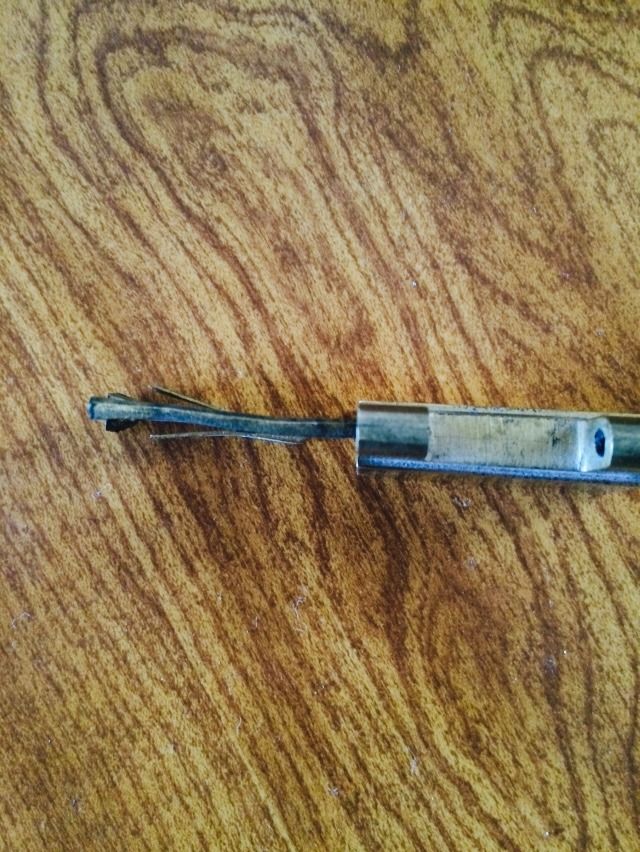
and the bottom view.
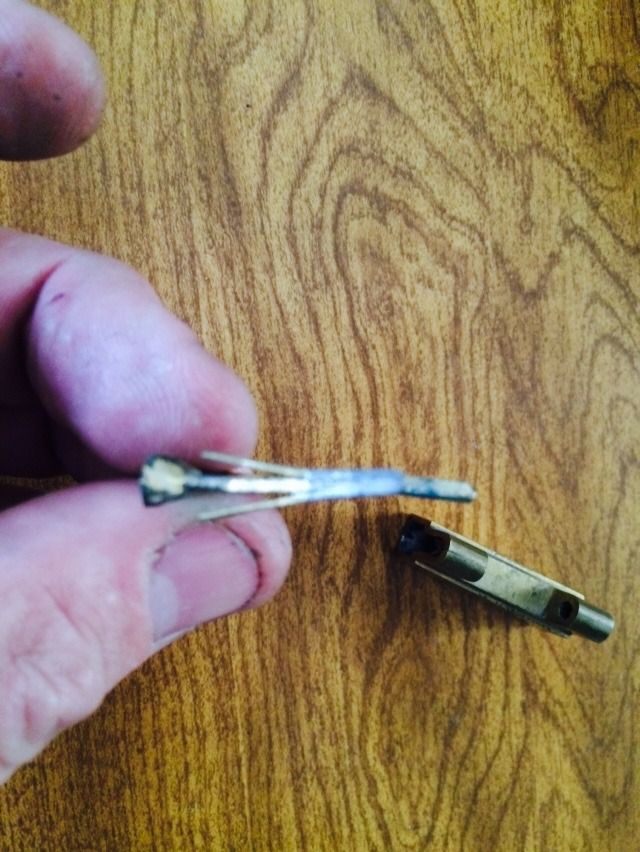
The bent prongs of the key start on either side of the 'arrow' shape near the point.

and as the key is pressed forward into the lock, those prongs fold the springs (sides of the arrow) inwards.
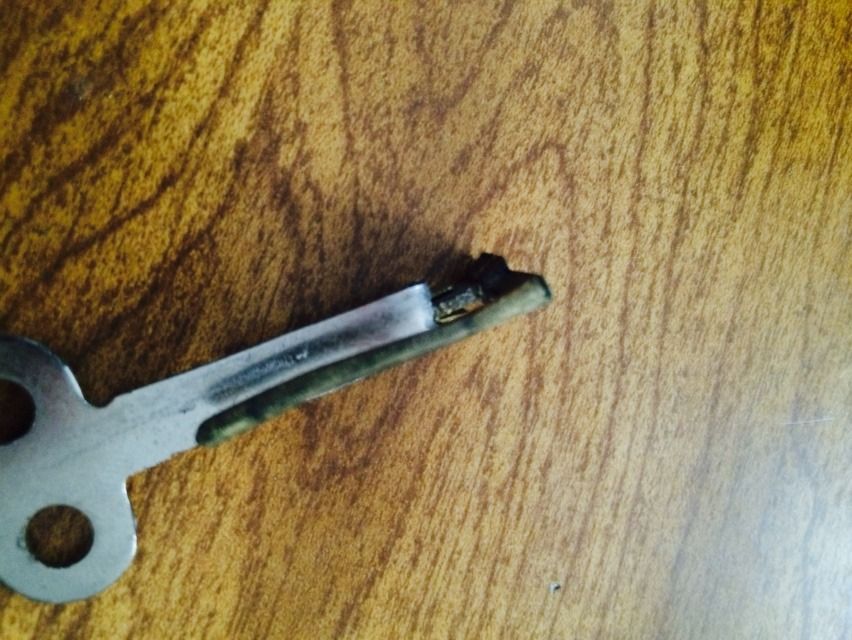
Seen from underneath, you can see the prongs 'in action'.
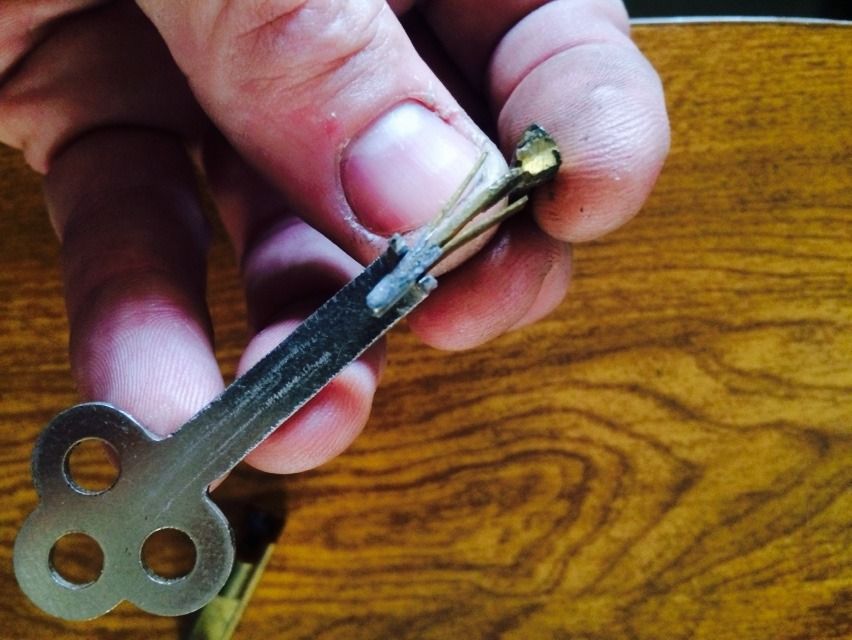
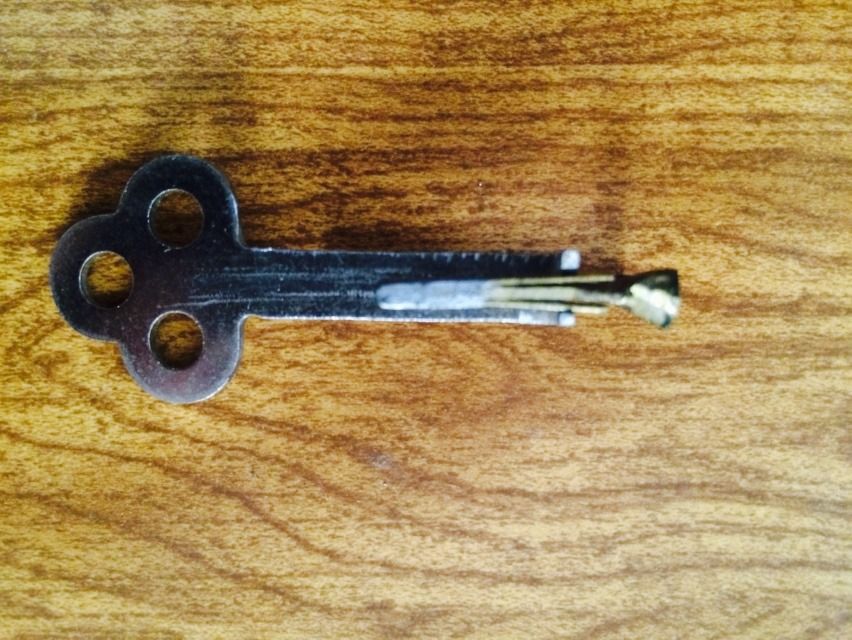
Once the prongs are folded in, the end of the center portion can slide outwards, allowing the padlock to open.
Here is the top of the box (without the note telling them to hold it for me so a key can be made).
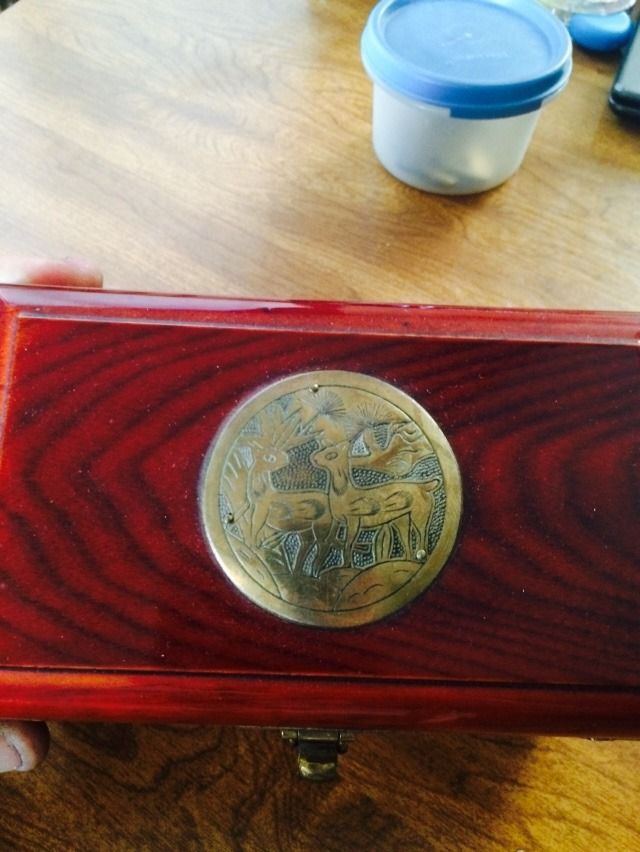

That about covers it. It goes back to the thrift shop next time I'm over that way.
Gordon






